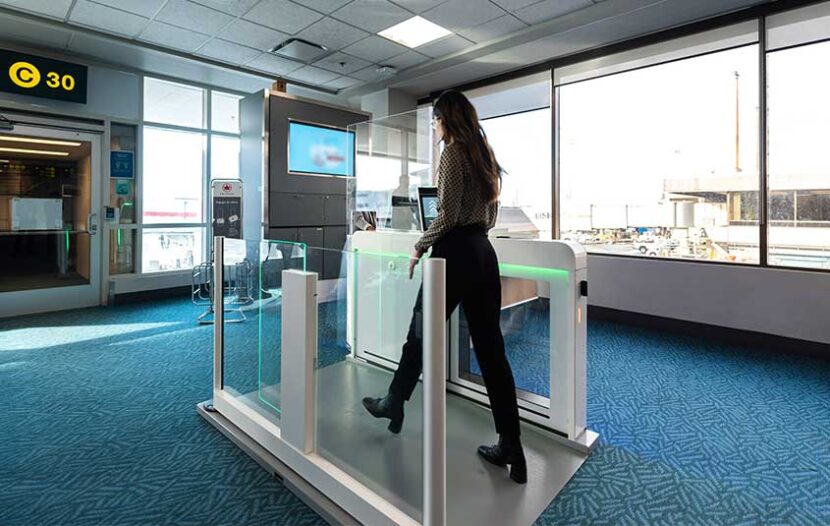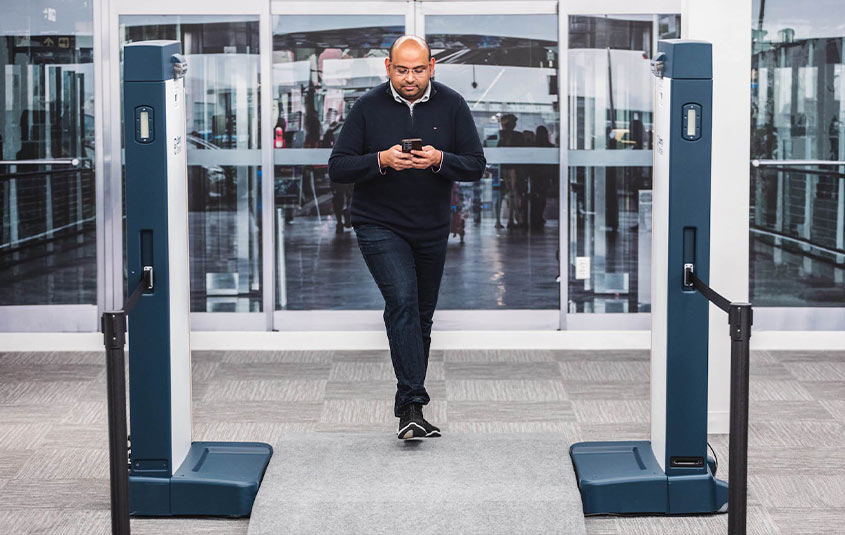MONTREAL — Air Canada has been granted approval to use facial recognition technology, becoming the first airline in Canada to test digital identification.
In a pilot project currently underway, Air Canada’s digital identification is now available for customers departing from Vancouver International Airport (YVR) when boarding select flights to Winnipeg, and for eligible customers entering the Air Canada Café at Toronto Pearson International Airport (YYZ).
There are also plans to expand digital identification options to select Canadian airports and Maple Leaf Lounges as part of the pilot project phase.
“Many of our customers already utilize digital credentials to simplify their daily activities such as unlocking mobile phones, entering workplaces, verifying identification during financial transactions and more. We are very excited to now take a leadership position in Canada and test digital identification using facial recognition technology to validate customer identification quickly, securely and accurately at select airport touchpoints,” said Craig Landry, Executive Vice President and Chief Operations Officer at Air Canada.
Participation in digital identification is voluntary. Digital identification is not related to any government-sponsored program like NEXUS, Global Entry or US CBP Mobile Passport Control (MPC). According to Landry, customers who choose to use digital identification will benefit from a simplified and seamless process at the gate and when entering Maple Leaf Lounges.
Customers eligible to utilize the Air Canada Café in Toronto and customers on select flights from Vancouver to Winnipeg will receive an invitation to use the digital identification option, and instructions on how to create their secure digital faceprint prior to arriving at the airport.
Customers who do not wish to utilize digital identification may simply board as they currently do now by presenting their boarding pass and government-issued photo ID for manual ID check and processing. Likewise, customers may elect to continue scanning their boarding cards manually as they do now to enter the Air Canada Café at Toronto Pearson.
Minister of Transport Omar Alghabra said the government and Canadian airlines and airports are eager to move forward to solutions like digital identification and modernize the traveller journey in airports across the country.
“Air Canada’s pilot project will speed up processes at YVR and other airports where it’s established, while respecting robust privacy measures and security standards. This project has great potential in making gate boarding easier and faster for Canadian passengers, while maintaining strong safety measures,” said the Minister.
Digital identification is a single enrollment feature on the Air Canada app. Biometric data is encrypted and stored only on the customer’s mobile phone. Customers must provide additional consent for the data to be used on the day of travel and will only be retained for up to 36 hours.
For more information click here.
THE END OF SECURITY SCREENING, OR JUST ANOTHER LAYER?
In other news, security systems at Toronto Pearson Airport could get an extra layer of protection now that the airport has signed a letter of intent to purchase the artificial intelligence-powered security system from Liberty Defense called HEXWAVE.
HEXWAVE uses AI to detect dangerous or prohibited items. Pearson Airport was the first airport in the world to test the technology in 2022.
The post-pandemic surge in air travel demand – starting in spring 2022 and really ramping up last summer – saw hours-long lineups at several points in the airport experience, including security screening.
The situation was particularly bad at Pearson, and underscored what was already a priority for the airport: find new high-tech ways to maximize efficiencies, passenger flow, and safety.
“We feel that security screening is not a sustainable approach,” said Jeff Barrow, Associate Director, Safety & Security, GTAA.
“Today at the [security screening] checkpoints, we know that security effectiveness is there. However we’re always looking for new innovations. We believe this HEXWAVE technology is a step in the right direction … to not just add to the existing security effectiveness, but to really move it forward, to be more sustainable,” he said.
Rather than line up for potentially hours for security screening, the HEXWAVE solution is a walk-through detector. From the sounds of things, the detectors could be installed at terminal entrances, to screen everyone coming into the terminals – passengers as well as the public and staff.
“Today passengers and the public can move directly into the terminal without being screened,” said Barrow. “We don’t want to add any additional screening for them. However what HEXWAVE does is it provides us with that added layer of security screening, without impeding the movement of travellers coming into the airport, without slowing down the public. It allows passengers to keep their benign items on their person [like cellphones, car keys, wallets], making a much better experience for them, while at the same time making sure our security effectiveness is top of mind. You can simply walk through the device, and it’s only looking for items of concern.”
Barrow added: “HEXWAVE gives us that opportunity to have that walking pace, seamless, intuitive, more passenger-friendly experience than today’s security screening. We continue to see growth at the airport, we continue to see more passengers at the airport, so what better way than leveraging a technology like this to be more sustainable as we move into the future.”


